On quiet, tree-lined Prospect Place, in the heart of northern Crown Heights, you'll find a row of modest turn-of-the-century brick row houses with rounded full-height projections that give the block an undulating quality. On land acquired in 1907 by the short-lived Onslow-Moore Company, second-generation builders and brothers John and George Potts planned the row of five 20-foot wide two-family houses, each with four bays, stone decoration and bold cornices.
Today, we'll take a look at the past, present and future of the house at 1313 Prospect Place, with a look back at the neighborhood's vibrant history.
In the last half of the 19th century, the area around this section of Prospect Place was known as Weeksville, a community that served as a sort of sanctuary for the city's black residents after New York State abolished slavery in 1827. John Lefferts began selling off large landholdings in the area around that time, likely because slave labor was no longer available for its farms. African-American abolitionist Henry C. Thompson purchased 32 of the Lefferts lots, and in turn, sold them to other African Americans. By 1850, Weeksville was a thriving community of African-American families with its own churches, schools, cemetery and newspaper.
However, as the city continued to expand east at the end of the century, propelled by the newly opened Brooklyn Bridge and the Kings County Elevated Railway, brick and brownstone row houses, like our subject property, began to replace the wooden houses of Weeksville. Today, visitors can step back in time to this pioneering black enclave with a visit to the Weeksville Heritage Center and the Historic Hunterfly Road Houses, just three blocks northwest of our Prospect Place property.
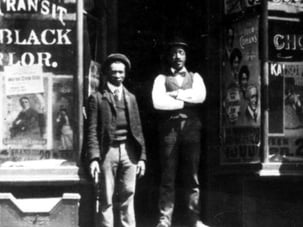
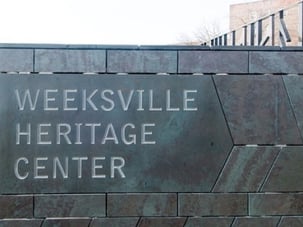
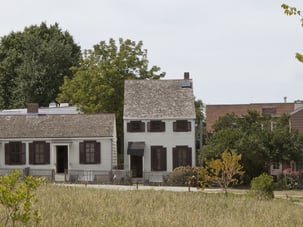
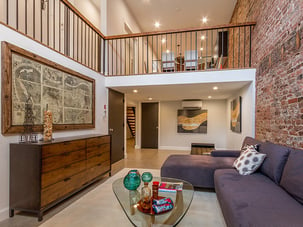
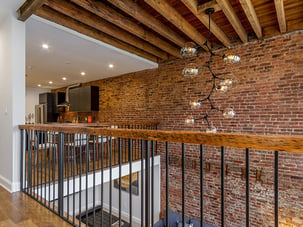
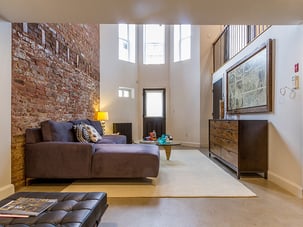
Originally conceived as a two-family residence, Dixon has reimagined the row house as a single-family home suitable for modern New York City occupants. With bright and open living spaces, state-of-the-art updates, and rustic industrial influences, the design scheme is completely at home in its Brooklyn environs. As is the project's focus on repurposing as much of the original material as possible; wood that once served as floor joists has been pressed into service as handrails indoors and flower beds outside.
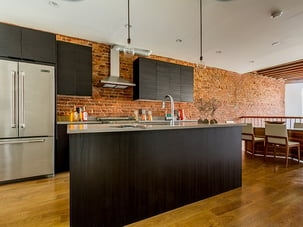
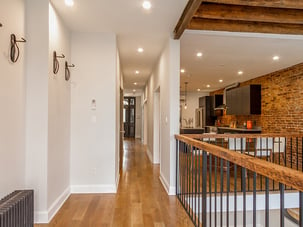
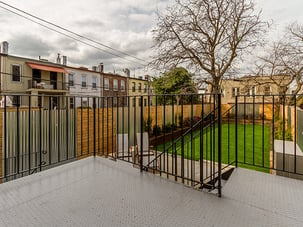
The literal heart of the revised parlor floor is a modern, open kitchen that balances restrained contemporary cabinetry with bold stainless steel appliances, exposed duct work and Edison-type light fixtures. More filament bulbs, this time in the form of a chic branch-like chandelier, draw the eye toward the double-height space over the family room below. A large bedroom and convenient half-bath are situated near the front of the floor, while a mezzanine walkway — handily lined with bike hooks — leads to a large deck overlooking the expansive backyard.
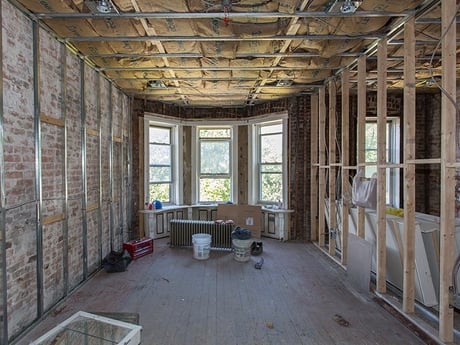
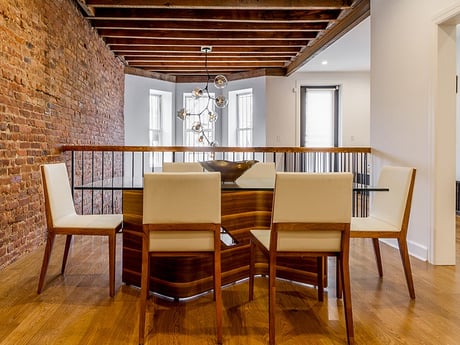
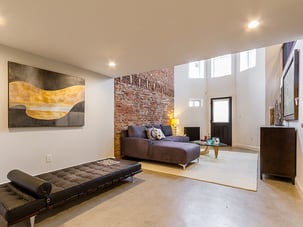
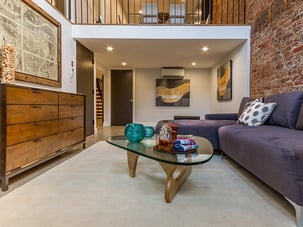
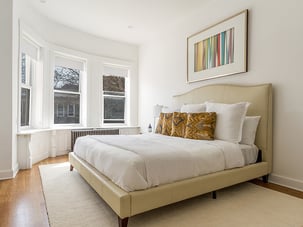
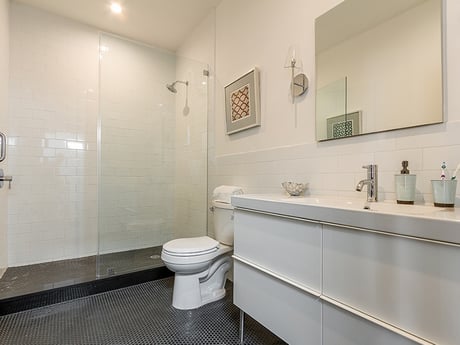
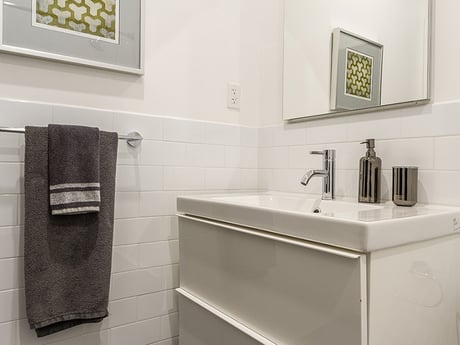
On the top floor, four more bedrooms — some with walk-in closets and the building's characteristic curved bay windows — flank two large bathrooms outfitted with gleaming white subway tile and classic penny tile that lend a fittingly traditional tone.
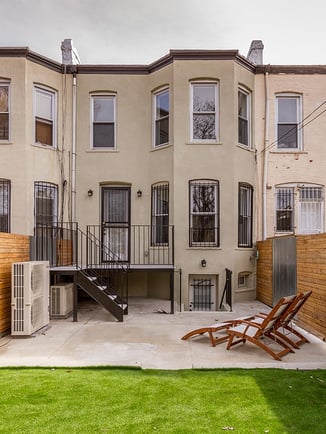
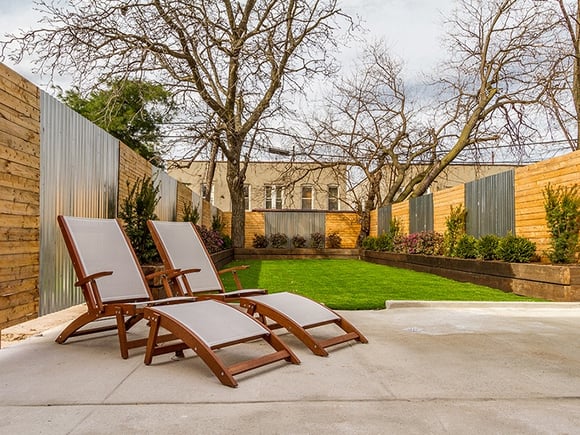
With deck, patio and turf lawn levels, the oversized rear yard offers multiple spaces for lounging, dining and play in this classic Crown Heights home. And the interior's industrial theme is reiterated outdoors, with diamond plate paving the spacious rear deck while corrugated metal punctuates the surrounding wooden fence.
For more than 100 years, 1313 Prospect Place has been housing New York City dwellers. Today, with modern amenities and abundant references to Brooklyn's industrial past, the home is ready for its next chapter.
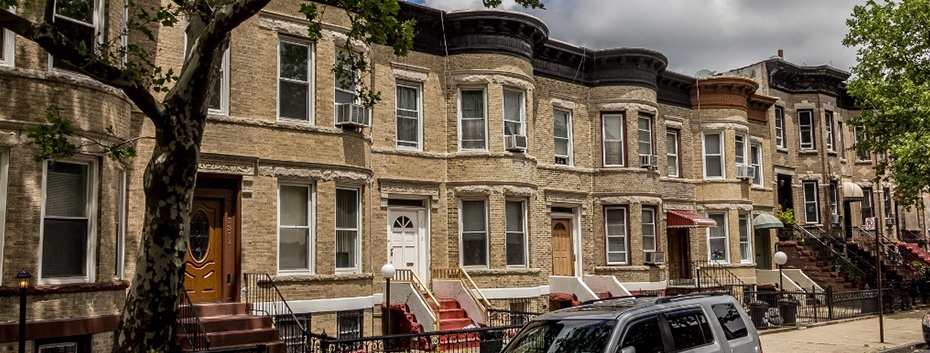
 201 366 8692
201 366 8692








